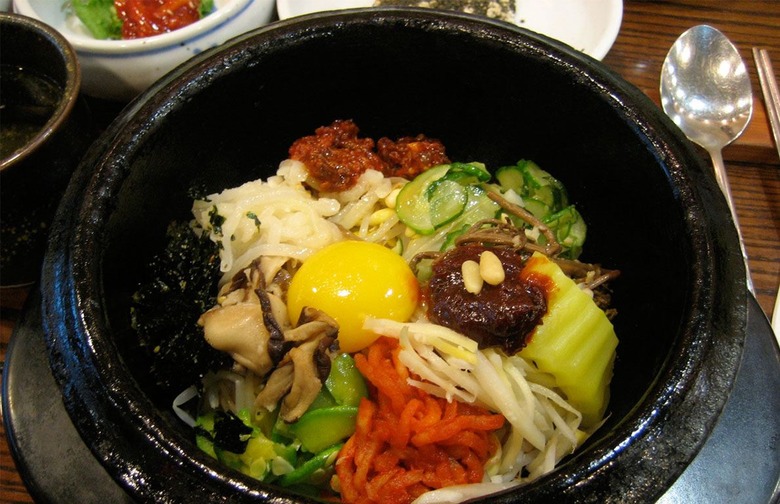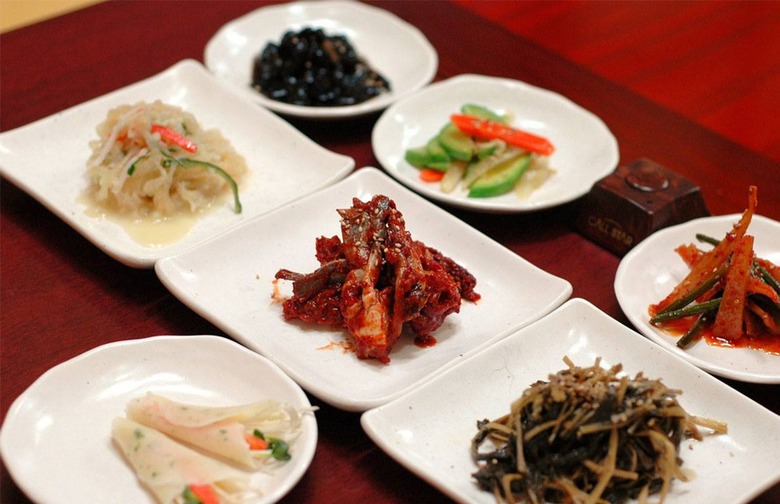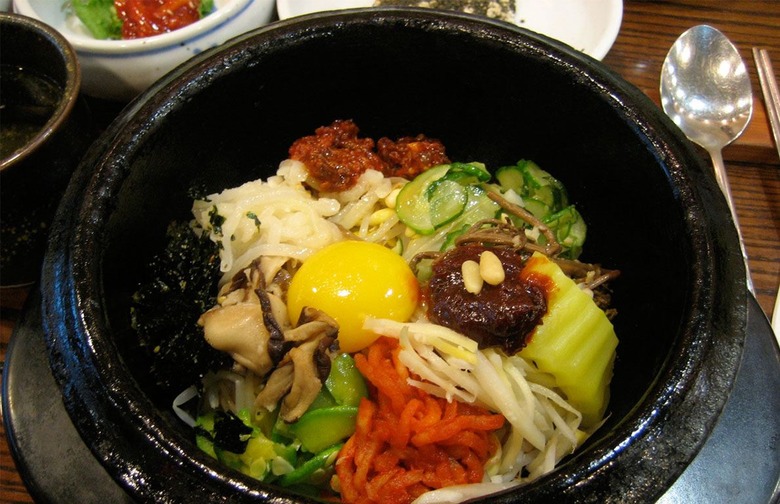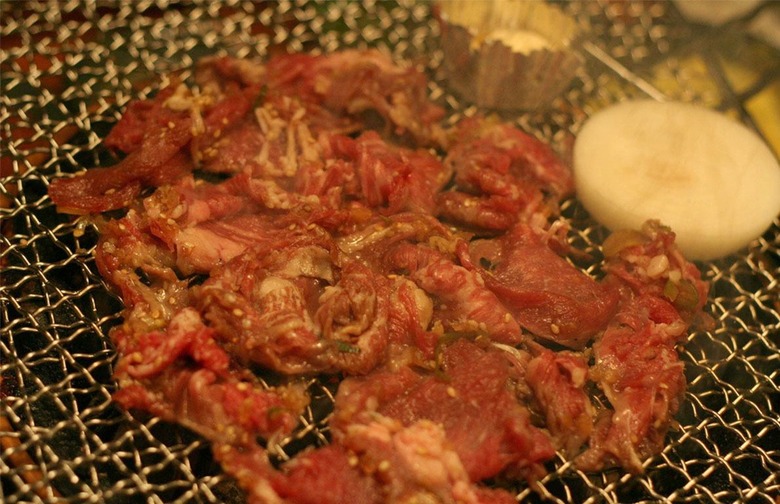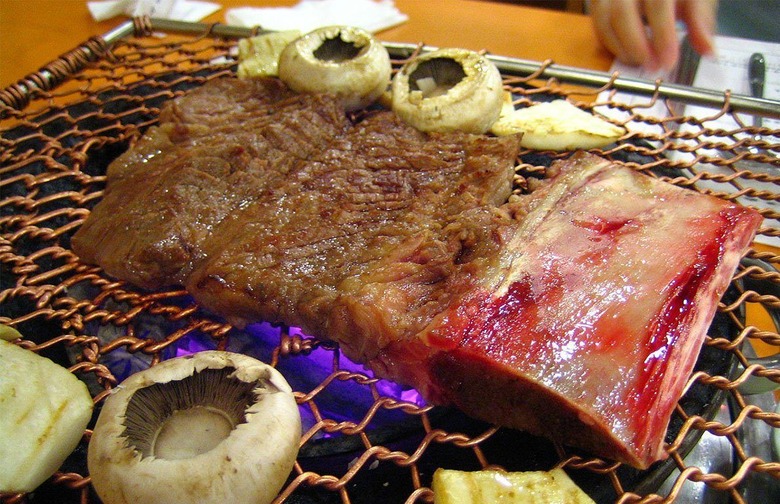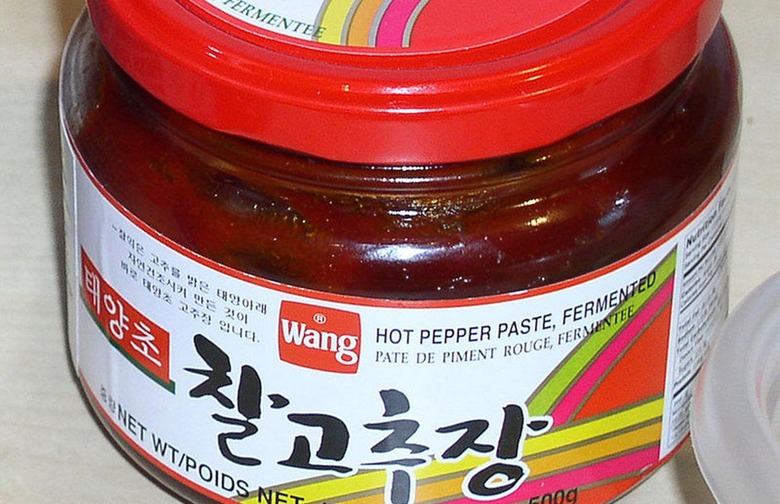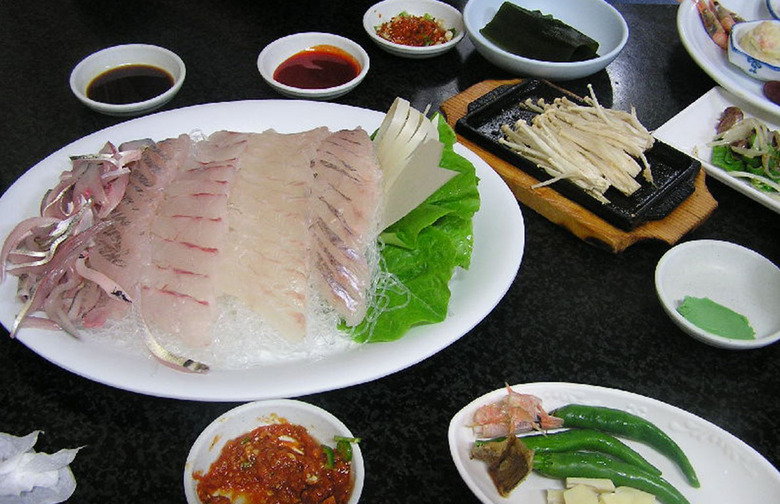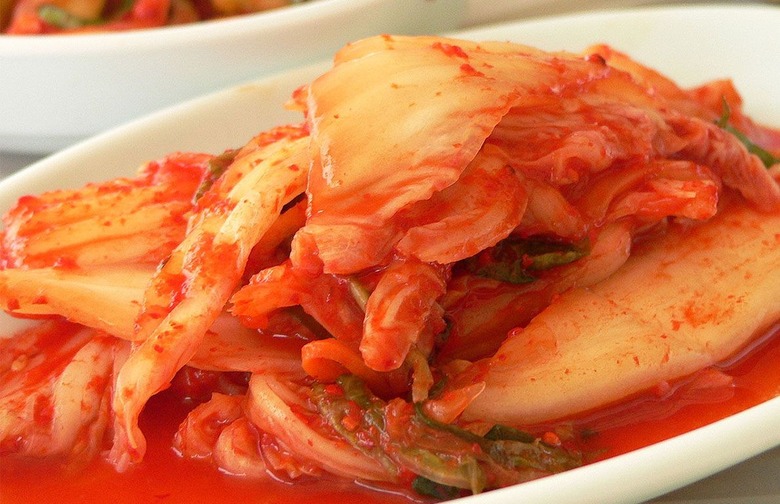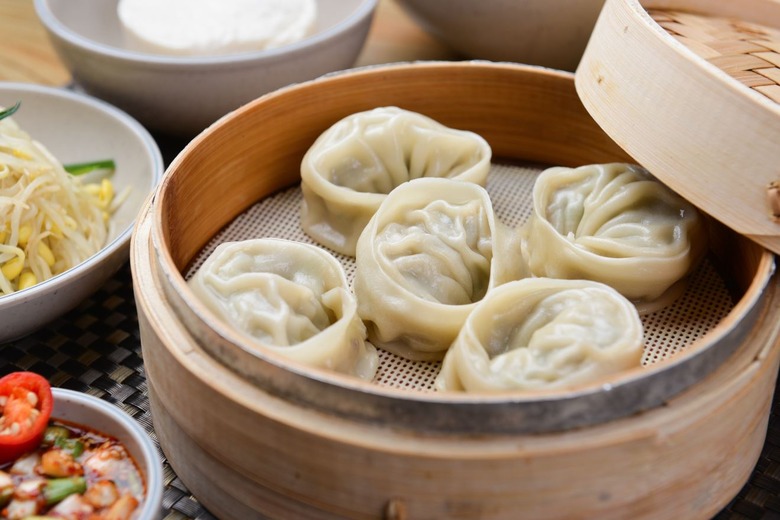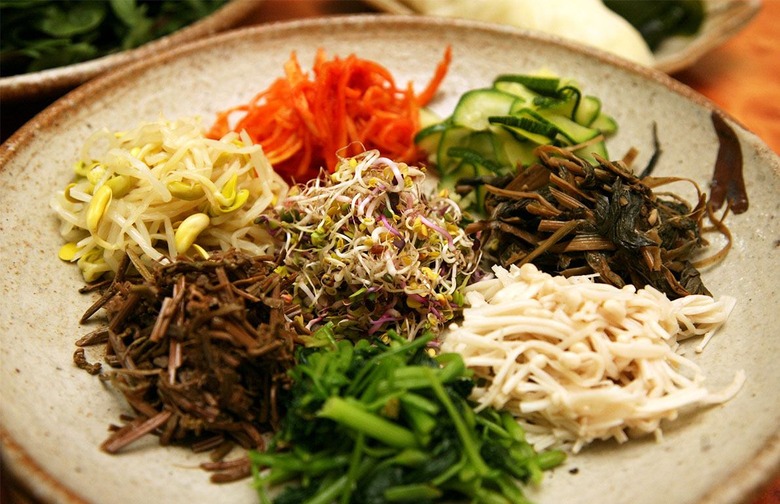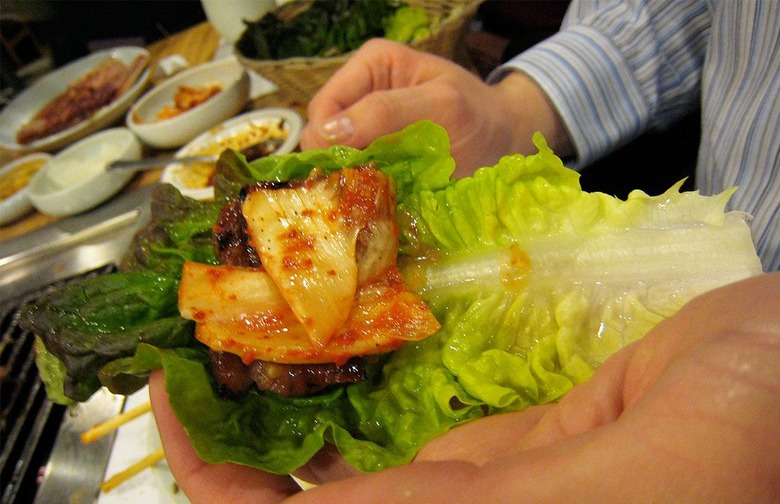Everything You Need To Know About Korean Food — America's Trendiest Asian Cuisine
It's a sad fact that when most people think of "Asian" food, the first thing that pops into their head is probably a lineup of American-inspired Chinese dishes that could barely be considered Asian at all, possibly followed up by sushi and pad Thai. But Asia is a massive place, a vast wonderland of amazing culinary offerings, and Korea's cuisine is finally beginning to get the recognition it deserves.
Banchan
Banchan simply means "side dishes," and these are a central component of a Korean meal. Placed in the middle of the table and intended to be shared, the number of banchan served with a meal can range from three to 12, depending on how formal the meal is. Popular banchan include fermented vegetables (kimchi); steamed or stir fried seasoned vegetables (namul); stir-fried pork, squid, or mushrooms with sauce (bokkeum); simmered beef or tofu (jorim); steamed eggs or fish (jjim); and pan-fried pancakes (jeon).
Bibimbap
Bibimbap literally translates to "mixed rice," and it's a big bowl of warm white rice with a wide variety of hot toppings, usually including sautéed vegetables, fermented chile or soybean paste, sliced beef, and a raw or fried egg. It's all stirred together before being eaten.
Bulgogi
Made from thin-sliced sirloin or ribeye, bulgogi is marinated in a mixture of sugar, soy sauce, sesame oil, garlic, hot pepper, and usually puréed Asian pears and onions as tenderizers. The beef is then grilled, and it's a popular component of Korean barbecue.
Galbi
Another Korean barbecue mainstay, galbi translates to "rib." It's similar to bulgogi, except it's made with thin-sliced short rib instead of sirloin or ribeye.
Recipe: Kalbi (Korean Marinated Short Ribs)
Gochujang
A very popular Korean condiment, gochujang is made with red chiles, fermented soybeans, glutinous rice powder, and salt. Spicy, earthy, slightly sweet, and loaded with umami, it's a central component of bibimbap as well as many other Korean dishes. If you like sriracha, you'll love gochujang.
Hoe
Pronounced "hway," hoe is the name given to raw meat dishes in Korea, of which there are many. Saengseon hoe, similar to sashimi, is usually dipped in a spicy sauce and wrapped in lettuce and perilla leaves; yukhoe is beef tartare seasoned with sesame oil, rice wine, and soy sauce; and gan hoe is rew beef liver with sesame oil and salt.
Kimchi
The one ubiquitous dish in Korean culture (and the best-known Korean food around the world), Korea's national dish, made by fermenting vegetables, comes in hundreds of varieties. While you'll find kimchi made with radishes, scallions, cucumbers, and many other vegetables, the most common kind, baechu-kimchi, is made with Napa cabbage. Traditionally, whole pre-salted cabbages are thoroughly rubbed with a mixture of sweet rice flour, sugar, garlic, ginger, onion, fish sauce, chopped fermented salted shrimp, and lots of hot chiles, and allowed to ferment for several days. The result is incredibly healthy, pungent, and flavorful, and complements just about every Korean dish.
Mandu
Mandu are Korea's version of dumplings. Traditionally filled with chopped meat, tofu, scallions, garlic, and ginger, these can be either boiled, pan-fried, or steamed, and are usually served with kimchi and a spicy soy and vinegar sauce.
Namul
Namul, put simply, are seasoned vegetables. Usually served on their own in banchan or as a component of bibimbap, the vegetables are generally blanched, but can also be served raw, boiled, fried, sautéed, or steamed. Salt, vinegar, sesame oil, and gochujang are popular seasonings, and common versions include bean sprouts with sesame oil and garlic, seaweed with vinegar and salt, stir-fried bracken fern shoots, steamed eggplant, garland chrysanthemum greens, julienned white radish in sweet vinegar sauce, and spinach with spring onions and garlic.
Ssam
Ssam means "wrapped," and the term refers to meat or vegetables — commonly topped with garlic, onion, green pepper, or a banchan like kimchi — wrapped up in lettuce or another leafy vegetable. Usually eaten in a single bite, and it's typically dunked in a spicy sauce called ssamjang before being eaten. Bossam, a steamed pork shoulder eaten ssam-style, is a popular dish in Korea, and when David Chang started serving it at his Momofuku Ssam Bar in New York, his version helped put him on the map.
